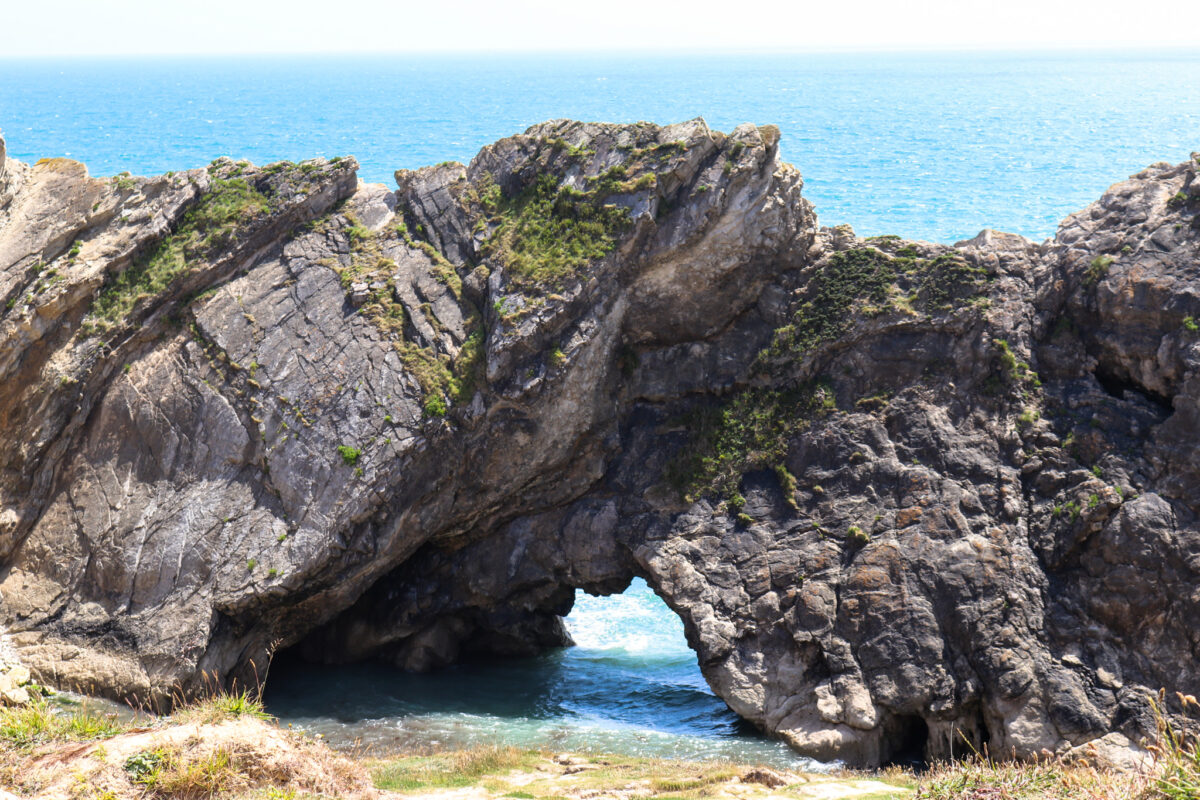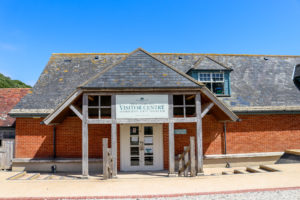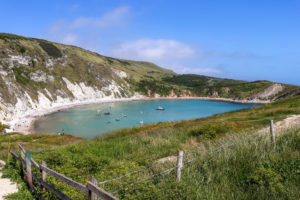This intriguing landform and small cove can be easily missed on your trip to Lulworth Cove, but making your way up the short path to see Stair Hole is well worth it.
The view from Stair Hole gives a new perspective to this stunning part of the Jurassic Coast with its impressive, commanding vistas of the coastline and down over Lulworth Cove itself.
If you have budding geologists with you, or if you want to bring those Geography lessons to life, this is the place to go to really see first-hand the effects of erosion on our coastline.
It’s also a brilliant spot to see the limestone strata and folds of the ‘Lulworth Crumple’, just to the left of Stair Hole.
Safety and walking information
Visitors must keep to the path so as not to contribute to the erosion of the area and, as with all areas of the coastline, it is advised to keep away from cliff edges at all times.
Adders may also be present in the grassy cliff at certain times of the year – typically spring and summer.
There is a dedicated viewing point at the top of the path from which the features of Stair Hole can be safely seen.
Geology and formation
Stair Hole

The ‘holes’ in Stair Hole, which are comprised of arches, caves and a blow hole, have been naturally-formed through years of coastal erosion.
There are three types of rock within Stair Hole: Portland stone, and Purbeck and Wealden beds.
Over time, continental shift caused the sedimentary rock to tilt, and the exposed Portland stone began to be eroded by the waves.
Weaknesses in the rocks succumbed to the sea over time, and small cracks soon became caves, which themselves collapsed into arches. The blow hole that can be seen was formed due to the release of air pressure as the caves were continually hit by waves.
The series of caves is what is left after the softer Purbeck and Wealden beds were washed away by the sea.
Lulworth Crumple
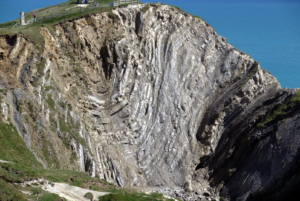
The striking layers and folds in the Lulworth Crumple consist of alternating bands of limestone and shale. It can be found to the left-hand-side of the Stair Hole formation.
The shale is much softer and less able to withstand gravity than the limestone, meaning that, as the cliff has eroded over time, the rocks have been affected at different rates.
As the softer shale erodes faster, the limestone that is left is unsupported by it breaks off, creating this fascinating pattern.
Exploring around Stair Hole
You can learn more about the geology and natural history of the area at Lulworth Cove‘s visitor centre, where you’ll find informative videos showcasing the incredible history of this special part of the Jurassic Coast, and for a souvenir of your day the gift shop here stocks fossils, rocks and gems, as well as a variety of guidebooks, accessories, and local Dorset produce.
A walk down to Lulworth Cove will be impossible to resist once you’ve viewed it from the cliff above at the Stair Hole viewing point. Its sheltered, horseshoe shape makes it ideal for sitting with a picnic and looking out at the fishing boats. There is also a shore-side café for a sit-down meal or drink.
The picturesque West Lulworth itself also makes for a lovely stroll. There is a variety of eateries and pretty streets to stroll around in this traditional fishing village.
Also nearby and worth exploring (although subject to access restrictions) are the Lulworth Fossil Forest and Lulworth Range walks. The Fossil Forest is a unique glimpse into the past with its fossilised tree stumps, and the Lulworth Ranges make for some fantastic walking with incredible views. Both are located within the British Army’s training ranges, which are only open to the public at certain times (typically weekends and school holidays).
How to get to Stair Hole
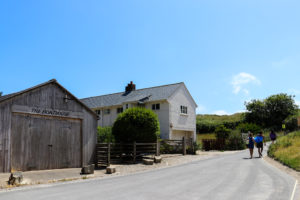
Parking at the main car park in West Lulworth (SatNav: BH20 5RQ), walk toward the visitor centre and continue through the village until you get to a road leading to the right up a hill. It’s moderately steep, but fairly short and easy.
Follow the path around to the left and you will arrive at a viewing point.
The viewpoint can be popular with visitors wanting to stop and take photographs of the view of both Stair Hole and down onto Lulworth Cove here, so there may be a short wait to have a good look in the busy summer months.
More fascinating geological features in Purbeck
Nearly every part of the Jurassic Coast has an important piece of geological history hidden – and some not-so-hidden – in the landscape.
Check out these special spots nearby that show how nature has shaped the Purbeck coastline over many years.
- Durdle Door – You can walk to the famous limestone arch from West Lulworth (up quite a steep hill), or drive to the Durdle Door Holiday Park car park for a shorter stroll (your Lulworth Cove parking ticket will also be valid here)
- Old Harry Rocks – The equally famous white chalk formation of Old Harry Rocks is easily accessed from Studland. You can also take a cliff path from Swanage for a longer walk
- Kimmeridge Bay – The colourful stone bands of Kimmeridge Clay are rich in fossils – many of the fossils that have been found here are on display in a museum in the village. A visit to Kimmeridge Bay makes for a fascinating afternoon on this important part of the Jurassic Coast
